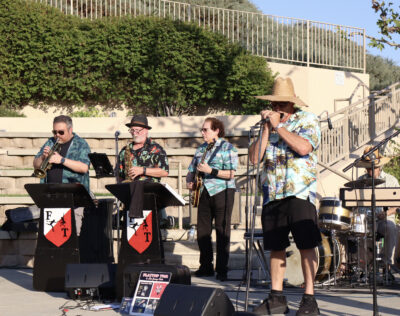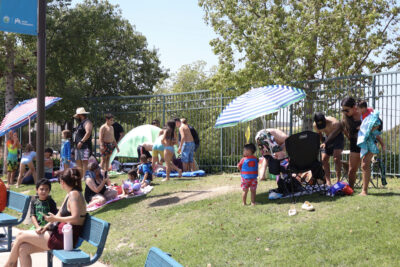By Visit California
California’s western border is edged by oceans, bays, and other tidal waterways — all populated with their own colorful residents. Depending on the location, you can see popsicle-orange garibaldi, barking elephant seals, sea lions, or anemones, as well as migrating whales and a skyful of seabirds.
The best way to experience these remarkable habitats is to visit one of the state’s 120-plus protected sanctuaries or preserves — not just to see wildlife, but to have fun, too.
“There are places underwater and along the water to play, where you can kayak, scuba dive, surf, tide pool, and watch your kids build sand castles on the beach,” says Rikki Dunsmore, project manager at the California Marine Sanctuary Foundation.
Here are some of Dunsmore’s picks, listed north to south:
Ten Mile Beach, Mendocino County
You’ll have plenty of use for binoculars at this stretch of rugged, unspoiled coastline that’s home to habitats galore. Roughly 18 miles north of Mendocino, the area actually consists of four reserves, including one of California’s least developed estuaries and one of its longest dune systems.
Whales spout in the Pacific, seals loll along the rocky shore, river otters make their home in the estuary, and more than 90 species of birds live, nest, or make annual migratory stopovers here.
Van Damme State Marine Conservation Area, Mendocino County
This wild and rocky wonderland is dotted with sea caves, making it a terrific destination for kayakers. Local outfitter Kayak Mendocino rents everything you need at adjacent Van Damme State Park; book a 90-minute guided kayak tour to get a close-up look at the caves and the resident seals and seabirds.
Farallon Islands, Near Marin County
About 30 miles west of the Golden Gate Bridge, this archipelago is a veritable oceanic Eden. Part of the massive Greater Farallones National Marine Sanctuary, the uninhabited Farallon Islands are comprised of rocky outcroppings surrounded by pods of porpoises, dolphins, sea lions and seals.
The refuge also protects the largest seabird rookery in the contiguous U.S., with nesting species including tufted puffins, rhinoceros auklets, and pigeon guillemots.
Fitzgerald Marine Reserve, Moss Beach
This San Mateo County — aka San Francisco Peninsula — reserve has some of the best tide pooling in California. At low tide, you can see crabs, sea stars, swaying anemones and bat stars in the natural rocky reefs just offshore. In the shallow pools, look for bright-yellow sea lemons, algae-hoovering chitons, and turban snails. Keep in mind, though, as a marine protected area, visitors can look, but not touch.
Point Lobos State Natural Reserve, Carmel
Walk a poppy-trimmed path to the dramatic, limestone point at this Monterey County reserve. You’ll see turquoise-blue water, long bands of bull kelp swaying in the waves, and possibly sea otters, harbor seals, sea lions, and, farther out, spouting whales. This is also a wonderful place for scuba diving — it’s an underwater tapestry of kelp, fish, nudibranchs, sea stars, and anemones..
Piedras Blancas, San Simeon
This under-the-radar refuge is an amazing wildlife experience — and as a nice bonus, it’s free. Five miles up the coast from Hearst Castle, up to 17,000 walrus-like elephant seals pile up on the narrow strip of rocky beach just steps from Highway 1. If you’re an animal lover, get ready to spend hours in this land-based seal rookery, where the West Coast’s largest pinnipeds breed, birth, molt and rest — and unleash distinctive, roaring bellows that cut through the sound of crashing surf.
Casino Point Marine Park, Catalina Island
A one-hour ferry ride from Long Beach, Catalina Island offers island-town charm, as well as this undersea world of enormous black sea bass, bright orange garibaldi, and two historic shipwrecks. Located next to the island’s landmark Casino building, Casino Point is a popular dive and snorkel spot, where you can also look for spiny lobsters and harmless horn sharks.
Crystal Cove State Marine Conservation Area, Laguna Beach
The tide pools along this three-mile stretch of Crystal Cove State Park are inhabited by anemones, sea stars and hermit crabs. Time your visit to the Laguna Beach park for low tide, then head to Reef Point and Pelican Point to search for critters among the rocks and pools. Head into the water to look for bright orange garibaldis, bat rays, and other native fish, and — if you’re lucky — an octopus hiding in a rocky crevice.
San Diego-Scripps Coastal Preserves, La Jolla
This San Diego complex of marine sanctuaries protects habitats ranging from sandy flats and rocky reefs to submarine canyons. It’s also a nice spot to see sea lions, dolphins, safe-to-swim-with leopard sharks and — from December to April — migrating whales. Rent kayaks to nose along the rocky coast and look for sea caves.












